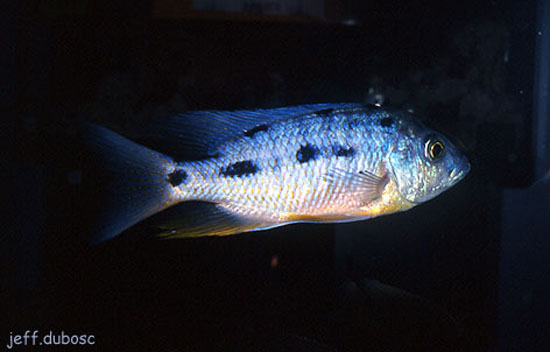| Cichlidae (Cichlids), subfamily: Pseudocrenilabrinae |
| 16.7 cm TL (male/unsexed) |
|
benthopelagic; freshwater |
| Africa: Endemic to the northern and southern parts of Lake Malawi. |
|
Dorsal spines (total): 17-17; Dorsal soft rays (total): 10-11; Anal spines: 3-3; Anal soft rays: 9-11. Small to medium-sized with the plesiomorphic melanin pattern. Differs from the other species with this pattern in the higher number of gill-rakers (16-18) and in the greater emphasis of the blotches along the dorsum in the overall pattern. Differs further from P. marginatus in the more posterior position of the deepest part of the body. |
| Favors a sediment-free rocky habitat, where it stays in midwater about one meter away from the substrate. Is normally found just below the surface, rarely deeper than 5 m. Mostly seen at places where the rocky coast drops steeply. Feeds on invertebrates taken from the water and on insects that fall into the water (Ref. 5595). |
|
Least Concern (LC); Date assessed: 20 June 2018 Ref. (130435)
|
| harmless |
Source and more info: www.fishbase.org. For personal, classroom, and other internal use only. Not for publication.
